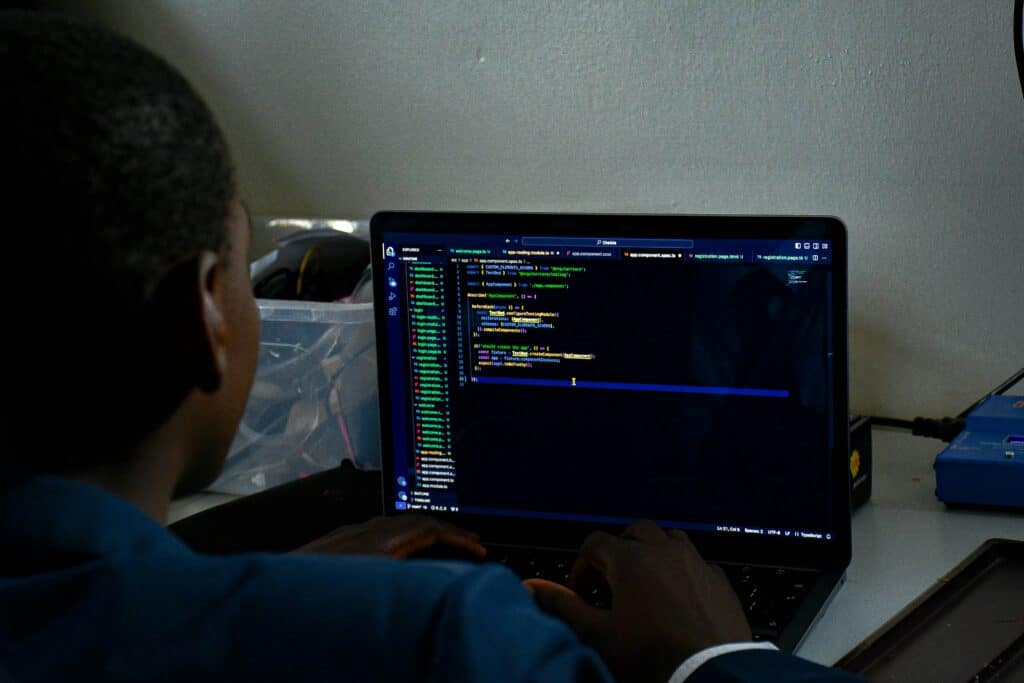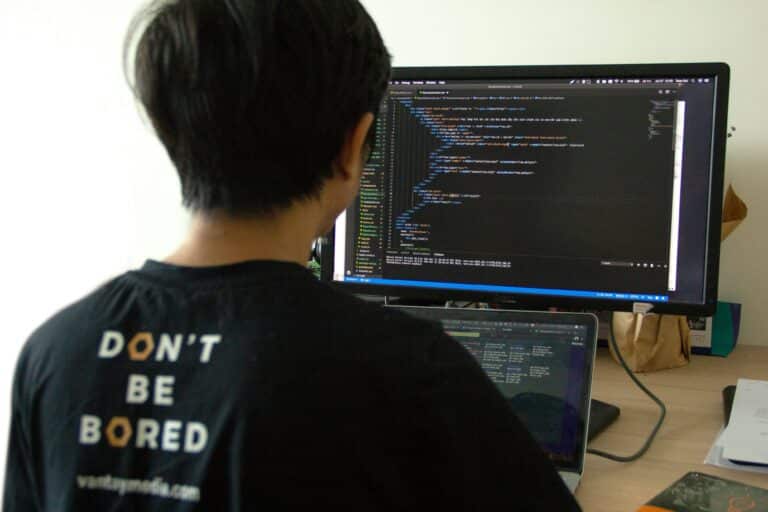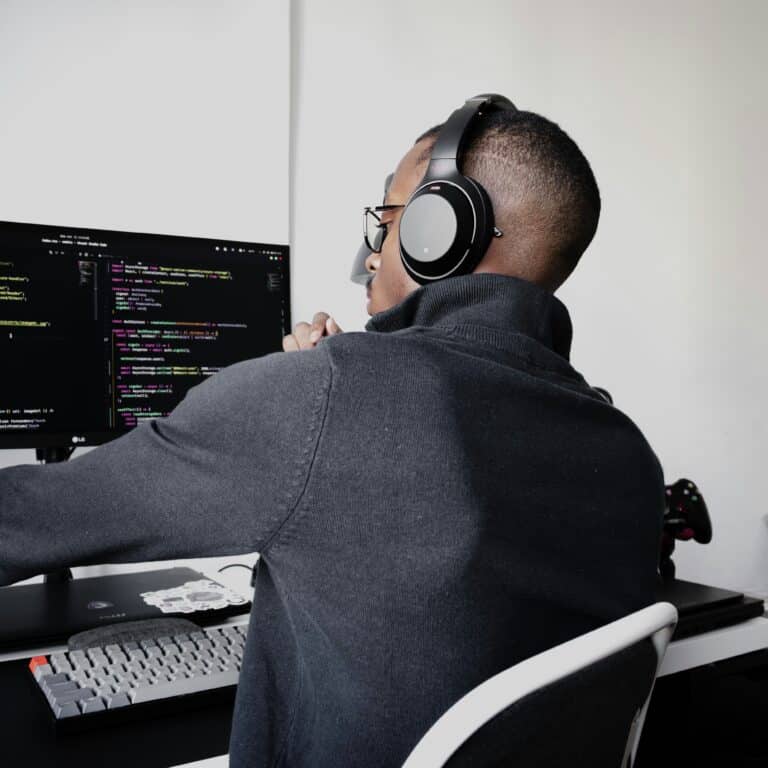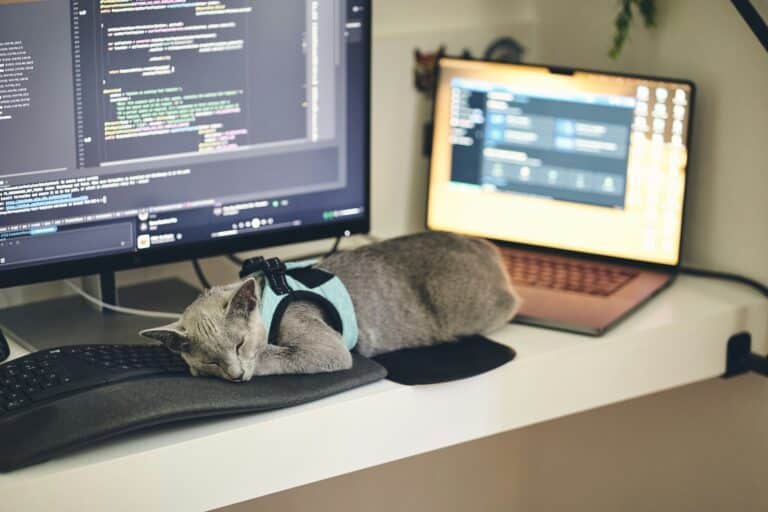If you’re reading this, chances are you’re a coder, developer, or someone involved in the tech world. Maybe you’ve experienced the agony of being disrupted while trying to unravel a complex problem or to write a block of code, leading to your workflow being completely derailed.😣
Imagine yourself in a state of flow, where your productivity soars, and time seems to fly. That’s what we’re here to talk about today: distraction-free coding. This article is your comprehensive guide to achieving that state of hyper-focus, leading to greater efficiency and output.⏳🚀
First, we’ll tackle the concept of ‘distraction-free coding’. We’ll dig into what it entails, why it’s essential, and the impact distractions can have on your coding productivity. This understanding will lay the groundwork for implementing effective strategies to mitigate distractions.💡
Next, we’ll discuss in-depth the techniques that will help you master distraction-free coding. These are strategies that range from optimizing your physical workspace, managing your time effectively, leveraging certain software tools, and even taming your own mind. These are tried and tested methods that have helped coders globally increase their productivity and the quality of their work.👨💻
Later in this article, we’ll examine how modern technology can both aid and hinder your efforts to code without distraction. We will look at software tools that can help block out distractions, manage your tasks, and assist in maintaining focus. However, we’ll also discuss the potential drawbacks of being too reliant on tech.🛠️⚖️
Finally, we’ll wrap things up with some tips on maintaining your newly gained productivity over the long term. After all, achieving distraction-free coding is not a one-time event but a continuous process. It requires constant effort and tweaks to your strategies as you grow as a coder. But, the payoff is well worth it.😉
Before we dive in, it’s important to note that everyone is unique. What works for one person may not work for another. Therefore, this guide is designed to provide a broad range of tips and techniques that you can experiment with and adapt to suit your own personal coding style and work habits.👍
This is not just another ‘how-to’ guide. It’s your roadmap to a more focused, productive, and satisfying coding experience. So, gear up for some major changes in your coding journey as you master the art of distraction-free coding. Trust me, your future self, your team, and your projects will thank you for it!💪
Introduction to Distraction-Free Coding: Defining the Landscape
Imagine being in a state of complete focus where time seems to fly and productivity soars. This mental state, often referred to as “flow”, is the holy grail of coding. It’s when you’re entirely immersed in your work, and your code seems to write itself. However, achieving this state of distraction-free coding can be a challenge due to numerous interruptions in the digital age. In this article, we’ll explore essential tips for maximum productivity and focus while coding. 🧠💻

Before diving into the tactics, it’s crucial to understand the factors that contribute to distractions while coding. They usually come in two forms – external and internal distractions. External distractions can be anything from a noisy environment to constant emails, while internal distractions are more about your mind’s wandering thoughts.
Now that we have a brief understanding let’s start by taking a look at some coding environments and their features that can help reduce distractions. We will also use a comparative table for a clear perspective.
Comparing Coding Environments
Selecting an appropriate coding environment is crucial for distraction-free coding. Let’s compare three popular coding environments: Sublime Text, Atom, and Visual Studio Code.
| Environment | Distraction-Free Mode | Key Features |
|---|---|---|
| Sublime Text | Yes | GoTo Anything, Multiple Selections, Command Palette |
| Atom | No | Package Manager, Smart Autocompletion, File system browser |
| Visual Studio Code | Yes | IntelliSense, Debugging, Git commands built-in |
From the table, we can see that both Sublime Text and Visual Studio Code offer distraction-free modes. These modes typically involve a full-screen mode with a minimalist UI, allowing you to focus solely on your code.
For an in-depth understanding of distraction-free modes in coding environments, you can watch this YouTube video titled “Coding in Distraction-Free Mode” from the channel “Coding Tech”.
Strategies for Distraction-Free Coding
Choosing an appropriate coding environment is just the first step. Here are some more strategies to help you achieve distraction-free coding.
Time Management Techniques
Proper time management can significantly improve your coding productivity. Techniques such as the Pomodoro Technique, where you work for a specified time (usually 25 minutes) and then take a short break (usually 5 minutes), can help maintain focus. After four “Pomodoros”, take a longer break. This approach can prevent burnout and keep your mind fresh.
Eliminate External Distractions
As mentioned earlier, external distractions can significantly hamper your coding productivity. Simple steps like keeping your workspace clean, using headphones to block out noise, or working in a quiet environment can help. Also, consider turning off notifications on your devices while coding.
Mindfulness and Meditation
Mindfulness and meditation are often overlooked but can be incredibly beneficial for maintaining focus while coding. Regular mindfulness exercises can help train your mind to stay focused on the task at hand and avoid unnecessary distractions.
For more information on meditation for coders, check out the YouTube video titled “Meditation for Programmers” from the channel “Developer Habits”.
Tools to Aid Distraction-Free Coding
Various tools can assist in achieving distraction-free coding by blocking out distractions or promoting focus.
Focus Tools
Focus tools like StayFocusd or Freedom can block distracting websites for a set amount of time. Using these tools, you can effectively manage your time on the internet and ensure it’s not eating into your coding productivity.
Task Management Tools
Tools like Trello or Jira can help manage your coding tasks. These tools allow you to set deadlines, prioritize tasks, and track your progress, helping you stay focused on your goals.
Code Review Tools
Code review tools like Crucible or Gerrit can help maintain code quality by providing a platform for peer review. These tools encourage accountability and ensure that you remain focused during coding.
By integrating these strategies and tools, you can achieve a state of distraction-free coding, leading to increased productivity and improved code quality. Remember, coding is as much a mental game as it is about understanding syntax and logic. Training your mind to resist distractions can give you an edge in this increasingly competitive field.
Conclusion
In wrapping up this extensive technical discussion, it is imperative to emphasize some salient points. At the heart of our discussion were key areas in the field of IT and Engineering – concepts that sometimes may seem insurmountable but are crucial in navigating the dynamic and fast-paced tech world.
Firstly, we delved into the basics of Software Engineering, shedding light on its fundamental principles. We appreciated the software development lifecycle (SDLC), which spans from system investigation to system implementation and maintenance. The importance of the different stages was underlined, with particular emphasis on the necessity of each phase to ensure the delivery of a robust and efficient software system.
We also unpacked the profound impact of emerging technologies in IT. We observed how technologies like Artificial Intelligence, Machine Learning, and the Internet of Things (IoT) have revolutionized industries and transformed how we live and work. These technologies have the potential to unlock unprecedented levels of productivity and innovation, but they also bring challenges, notably in security and privacy. Therefore, their application must be judiciously managed to harness their benefits fully.
Furthermore, we took a deep dive into Cybersecurity. The surging digitization of systems and services, while advantageous, has exposed organizations to increasing cyber threats. We explored various measures and frameworks to safeguard critical information infrastructure, reinforcing the importance of cybersecurity in ensuring the integrity, confidentiality, and availability of data.
With the dynamism in the tech world, the need for continuous learning cannot be overemphasized. To remain relevant, one must stay abreast of emerging trends and innovations. Hence, we provided insights on several resources, online platforms, and communities where you can stay updated and even acquire new skills.
In conclusion, the fast-paced nature of the IT and Engineering world requires a continuous update of knowledge and skills. We hope this article has deepened your understanding of these complex areas and, even more, inspired you to learn and explore further.
We’d love to hear your thoughts and experiences on this. Have you applied any of the concepts we’ve discussed in your work or projects? Do you have any questions or need clarification on any point? Feel free to leave a comment below 👇, and don’t hesitate to share this article with your network, they might find it helpful too! 😊
For further reading and research, we recommend the following links:
1. Software Engineering
2. Emerging Technologies
3. Cybersecurity
Remember, as Leonardo da Vinci said, “Learning is the only thing the mind never exhausts, never fears, and never regrets”. Happy learning! 💡
References:
– Software Engineering
– IBM Cloud
– Cisco



